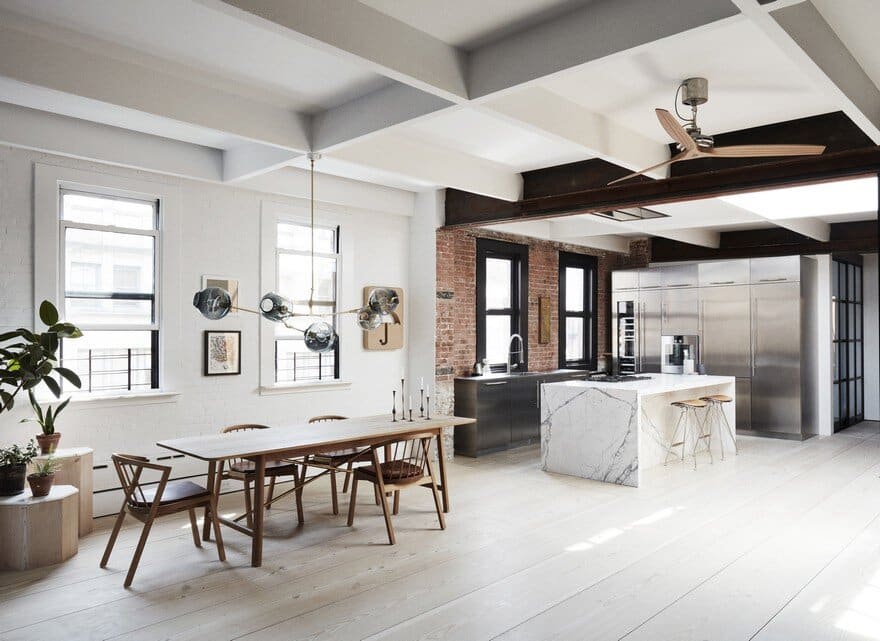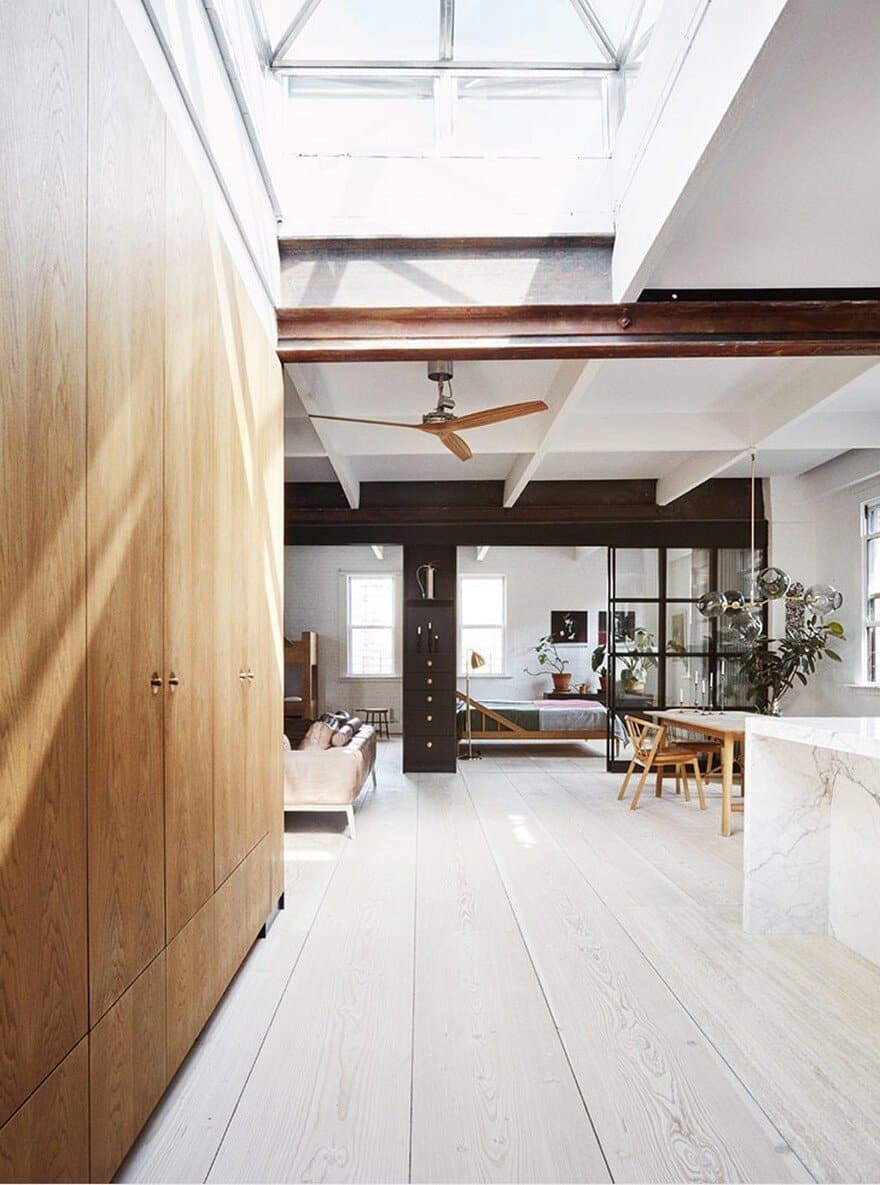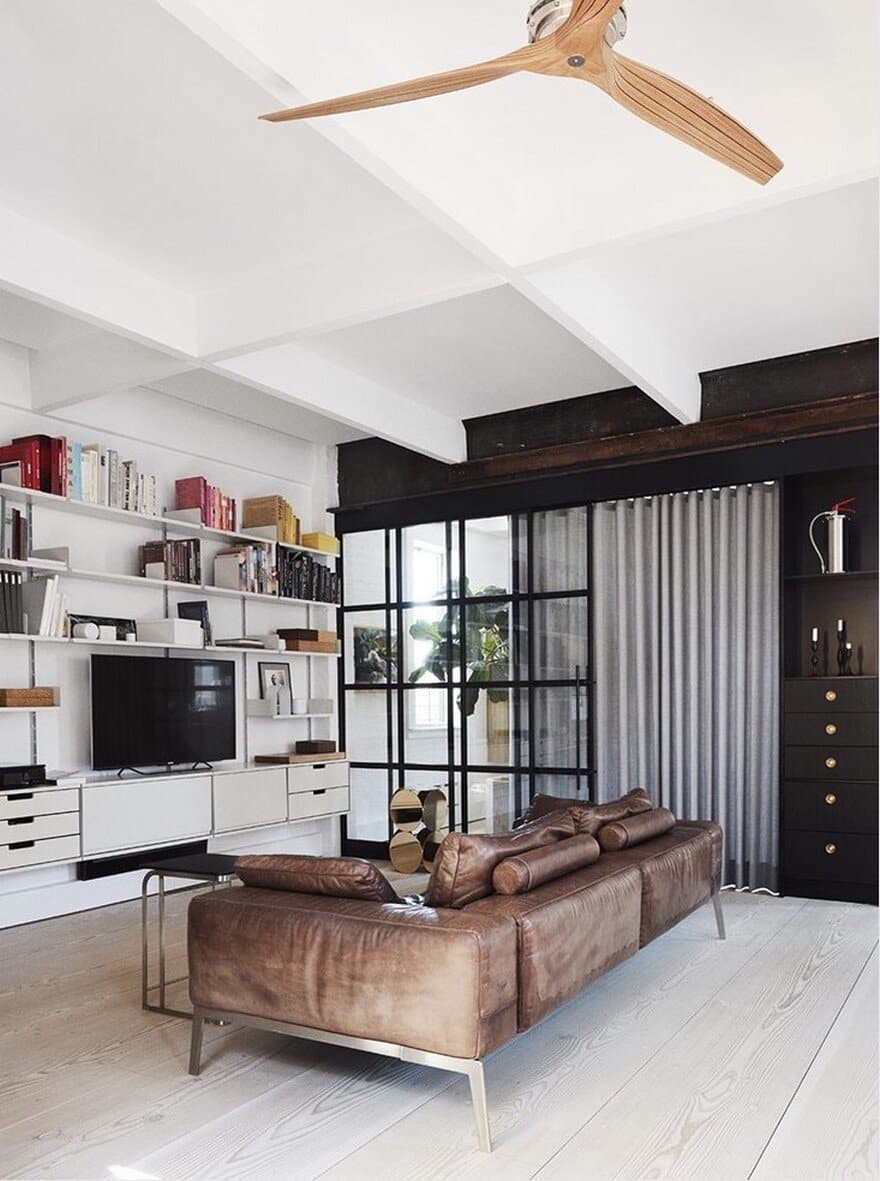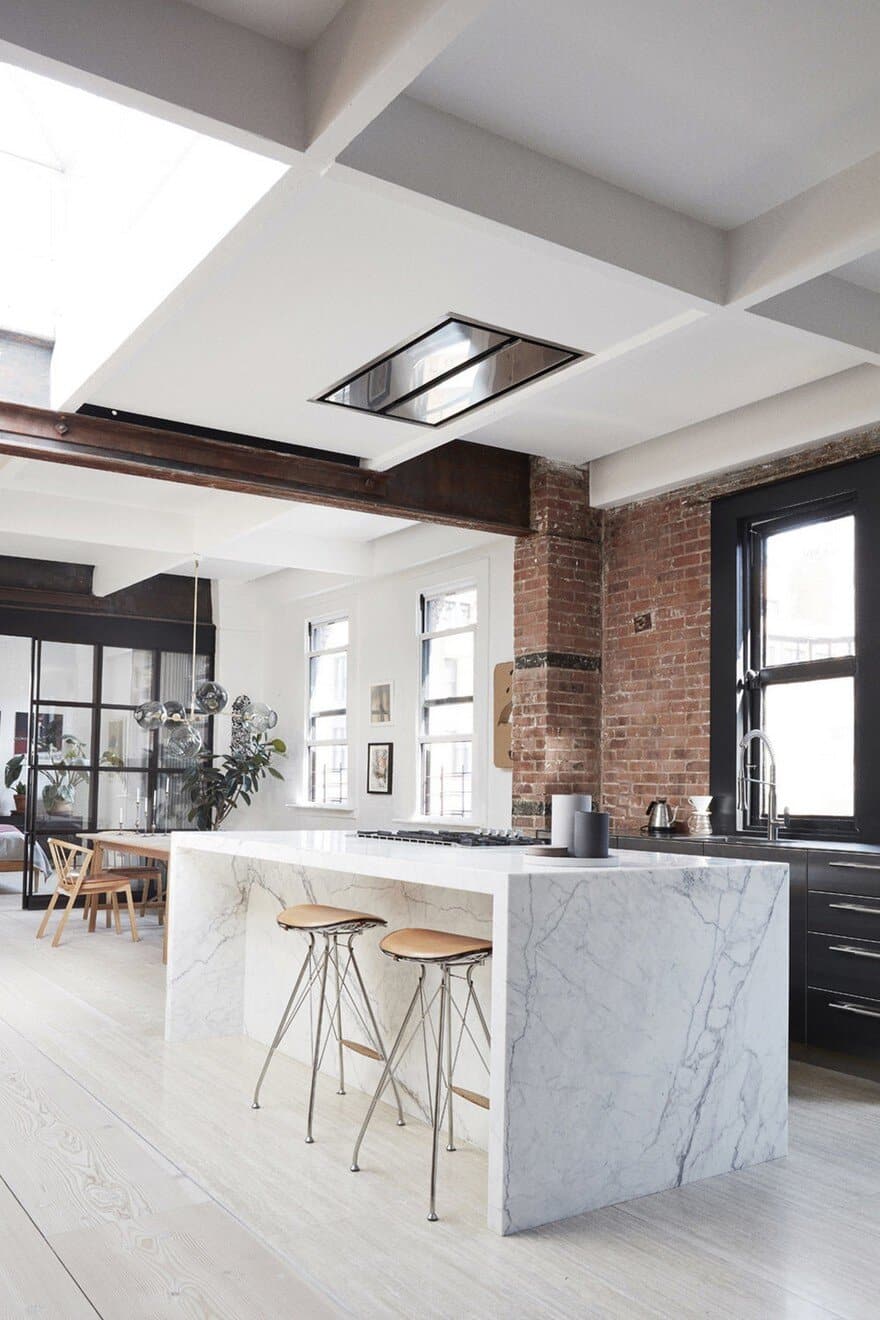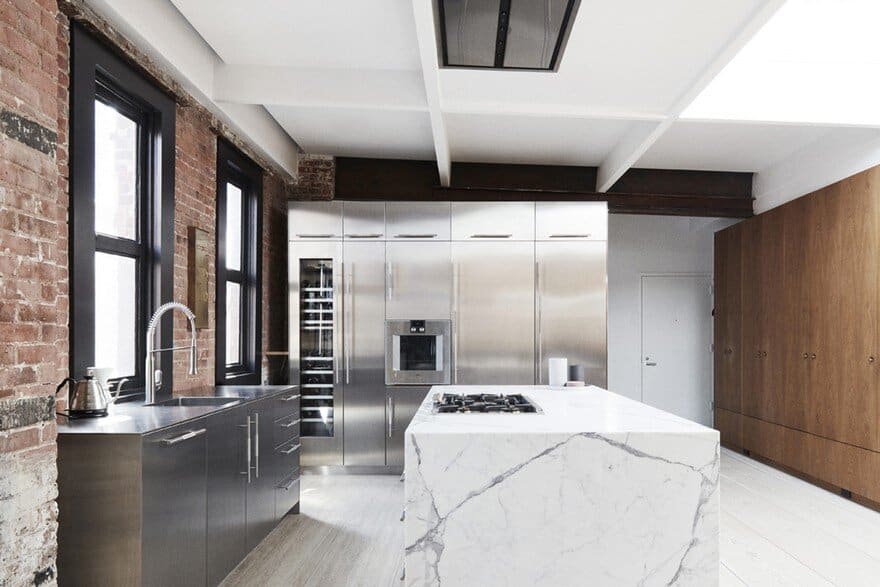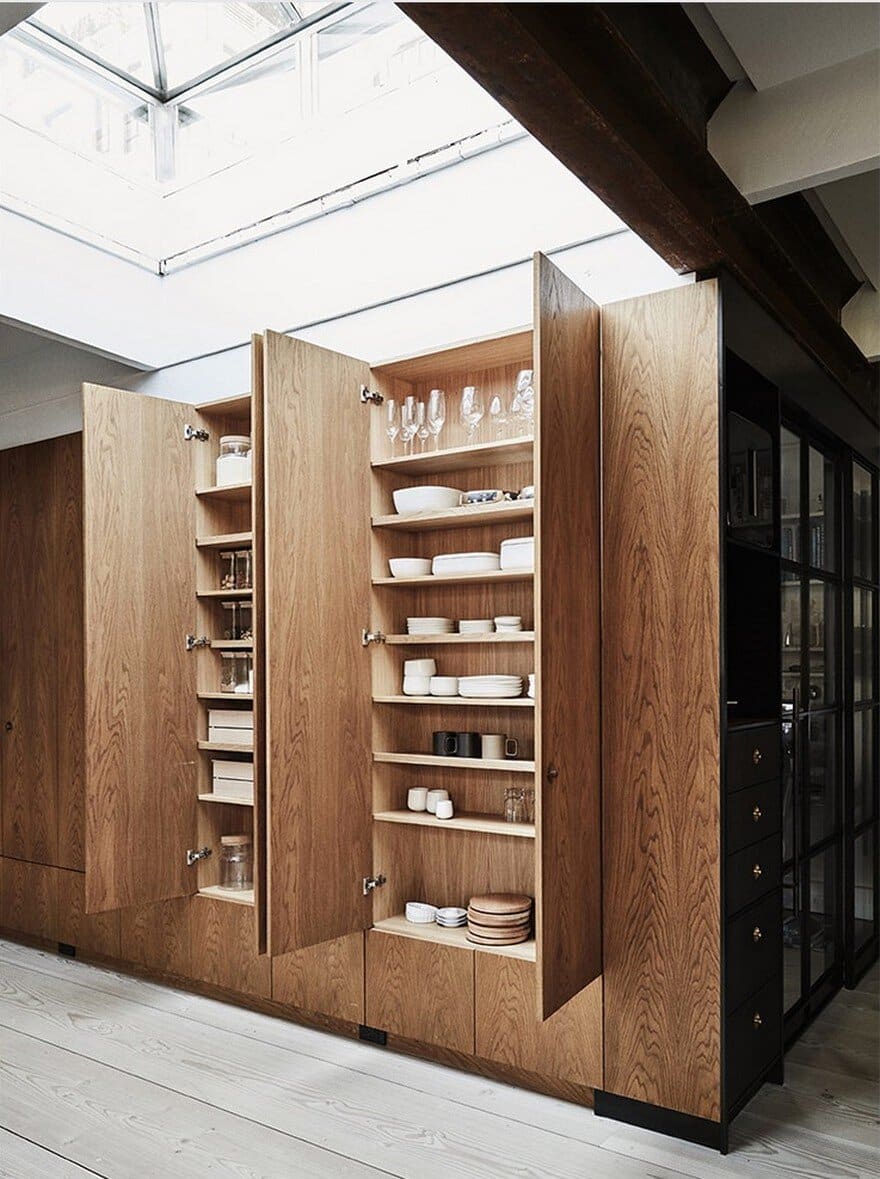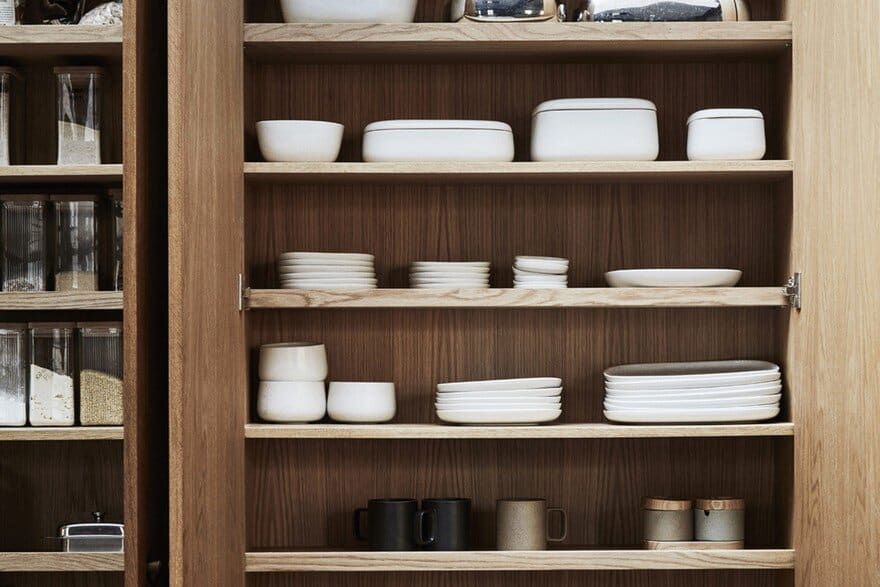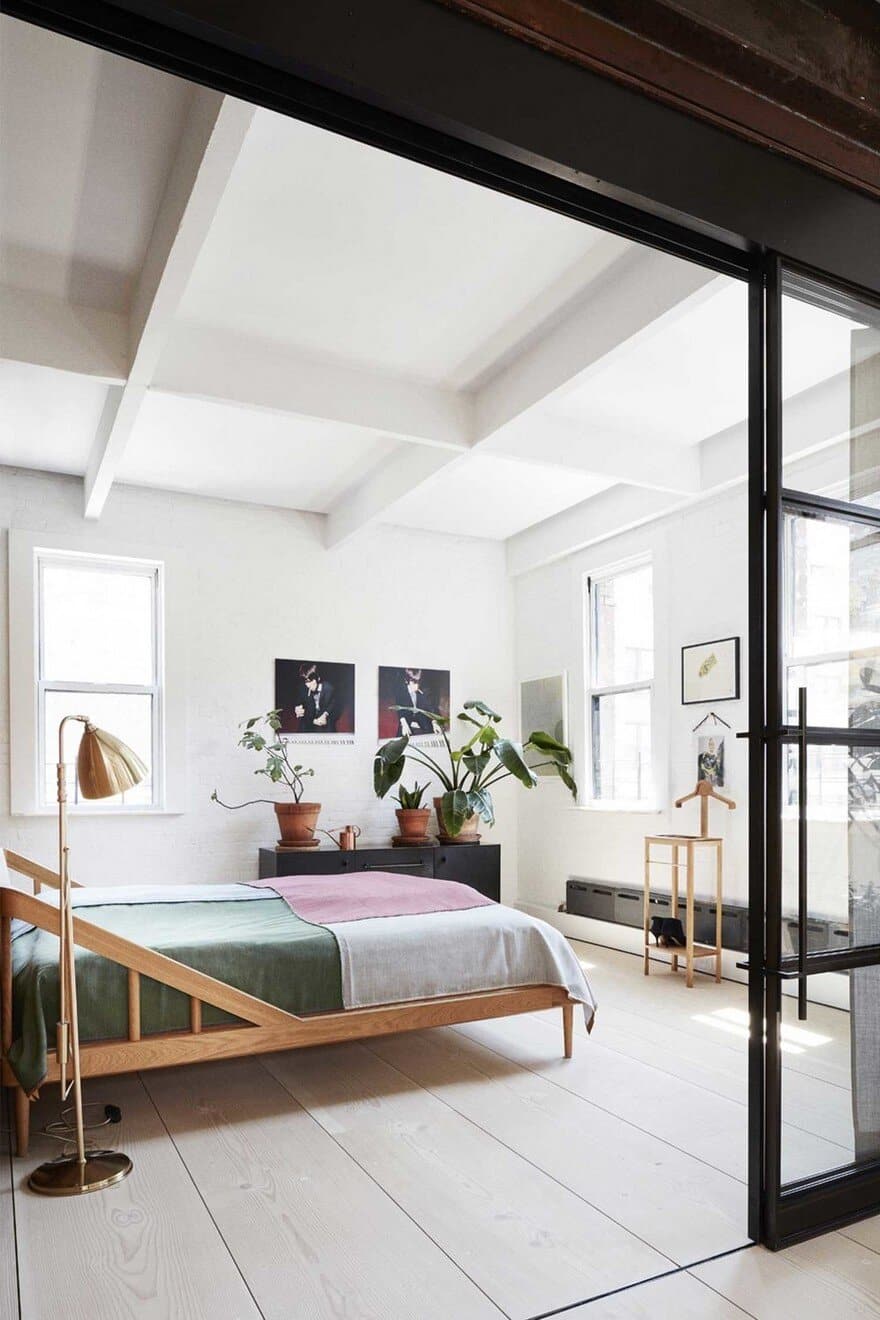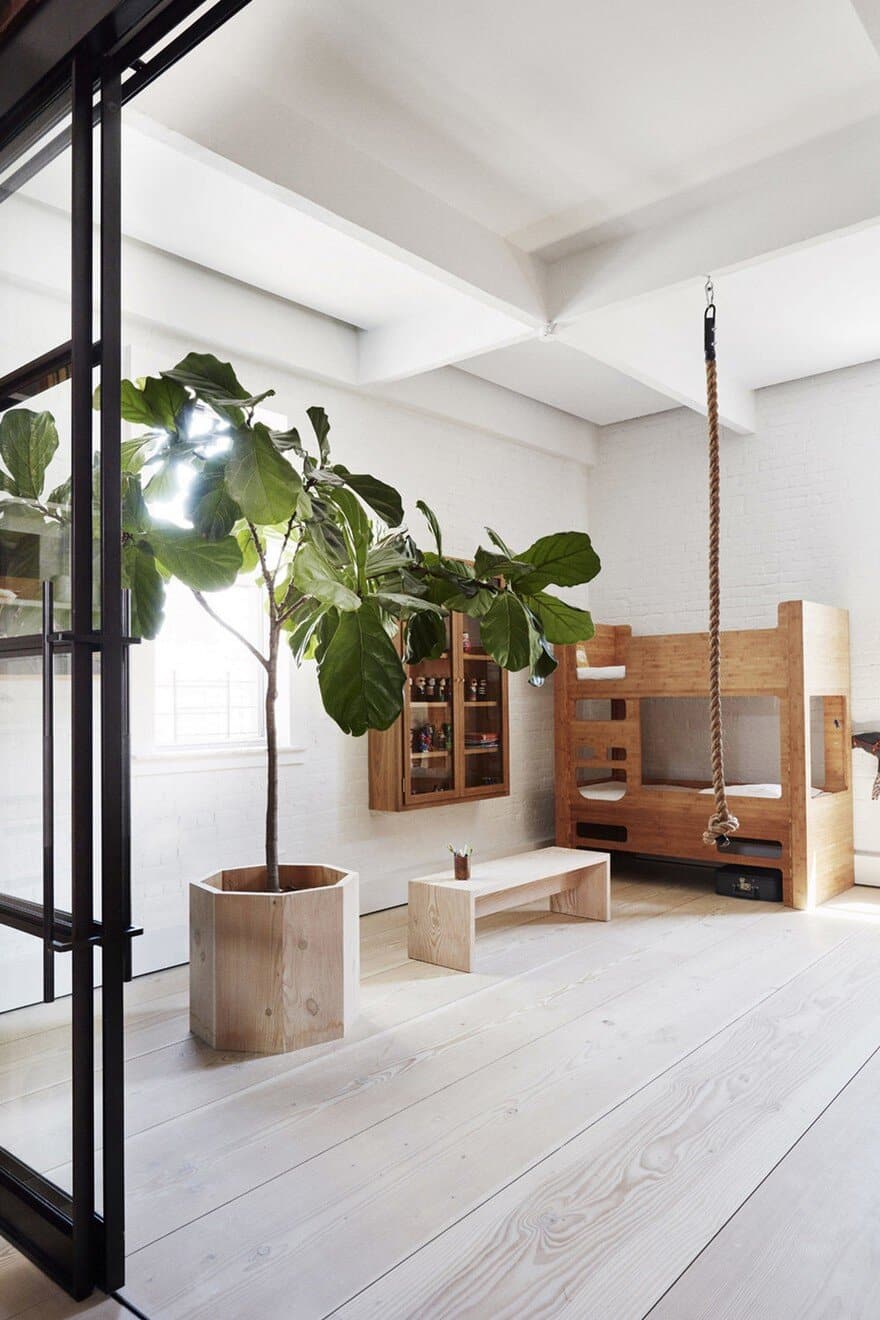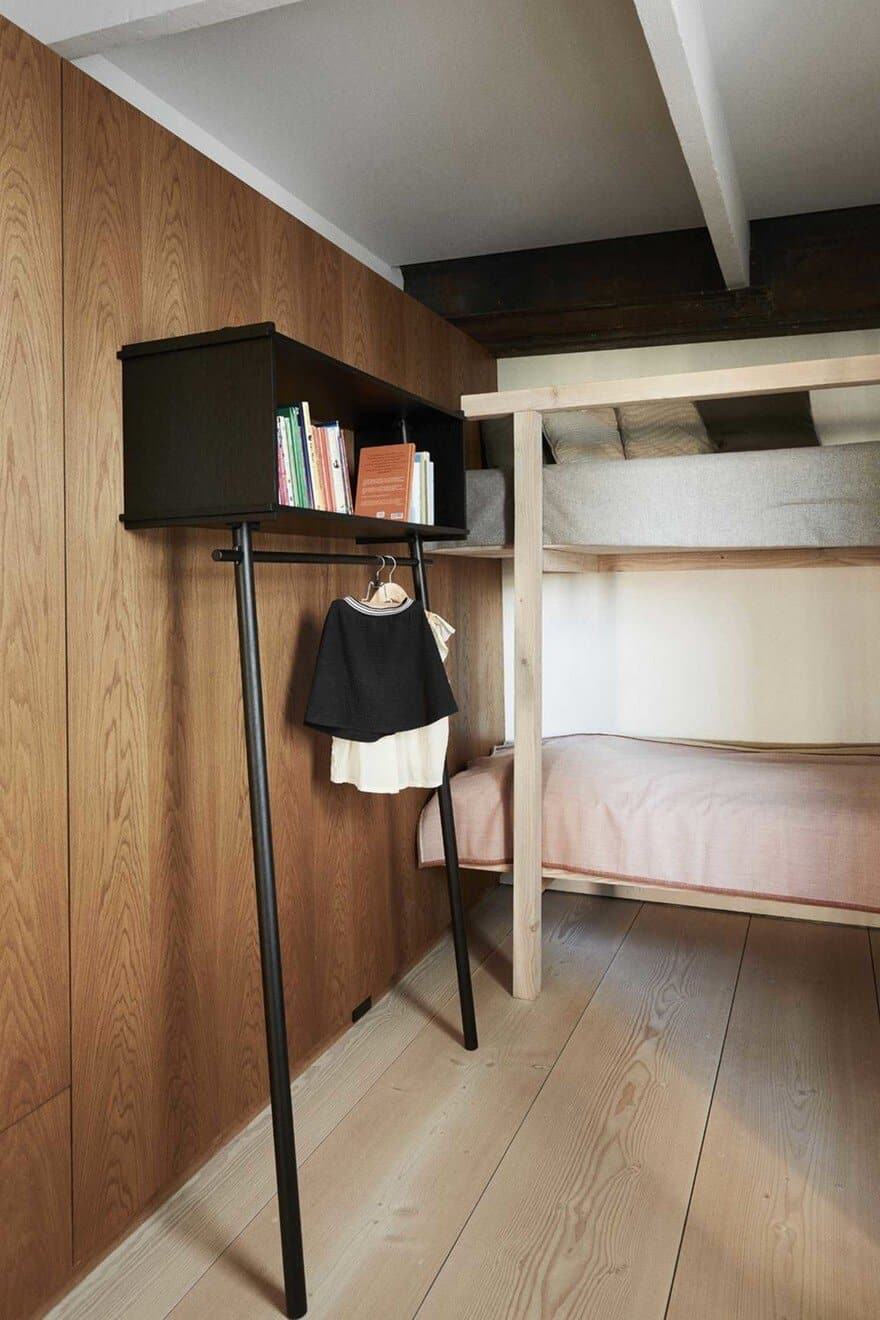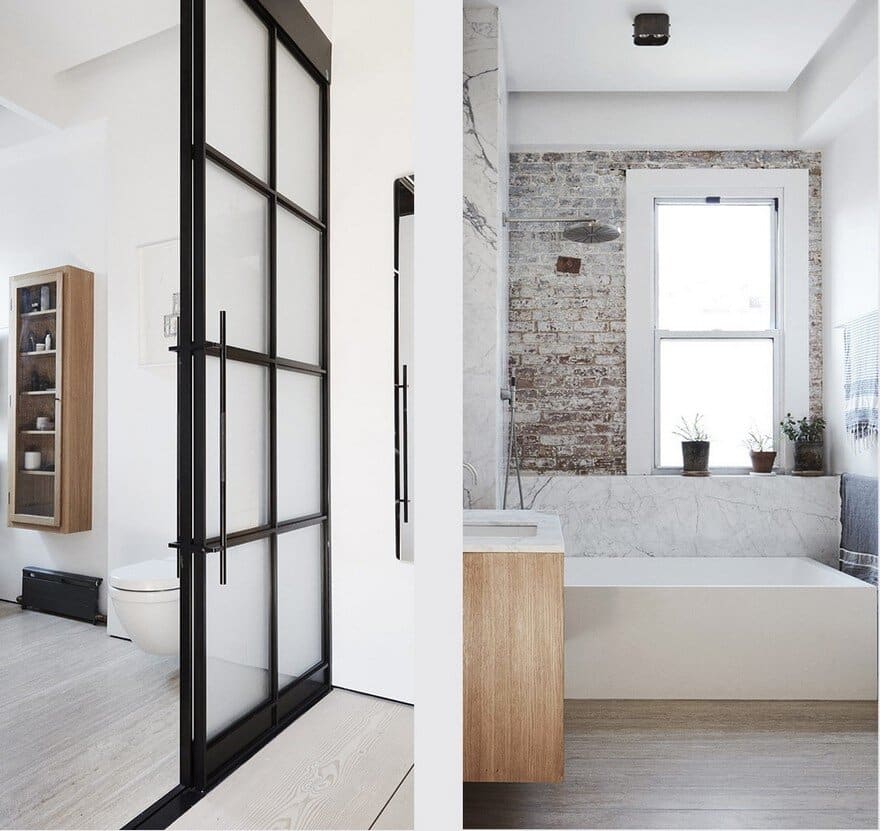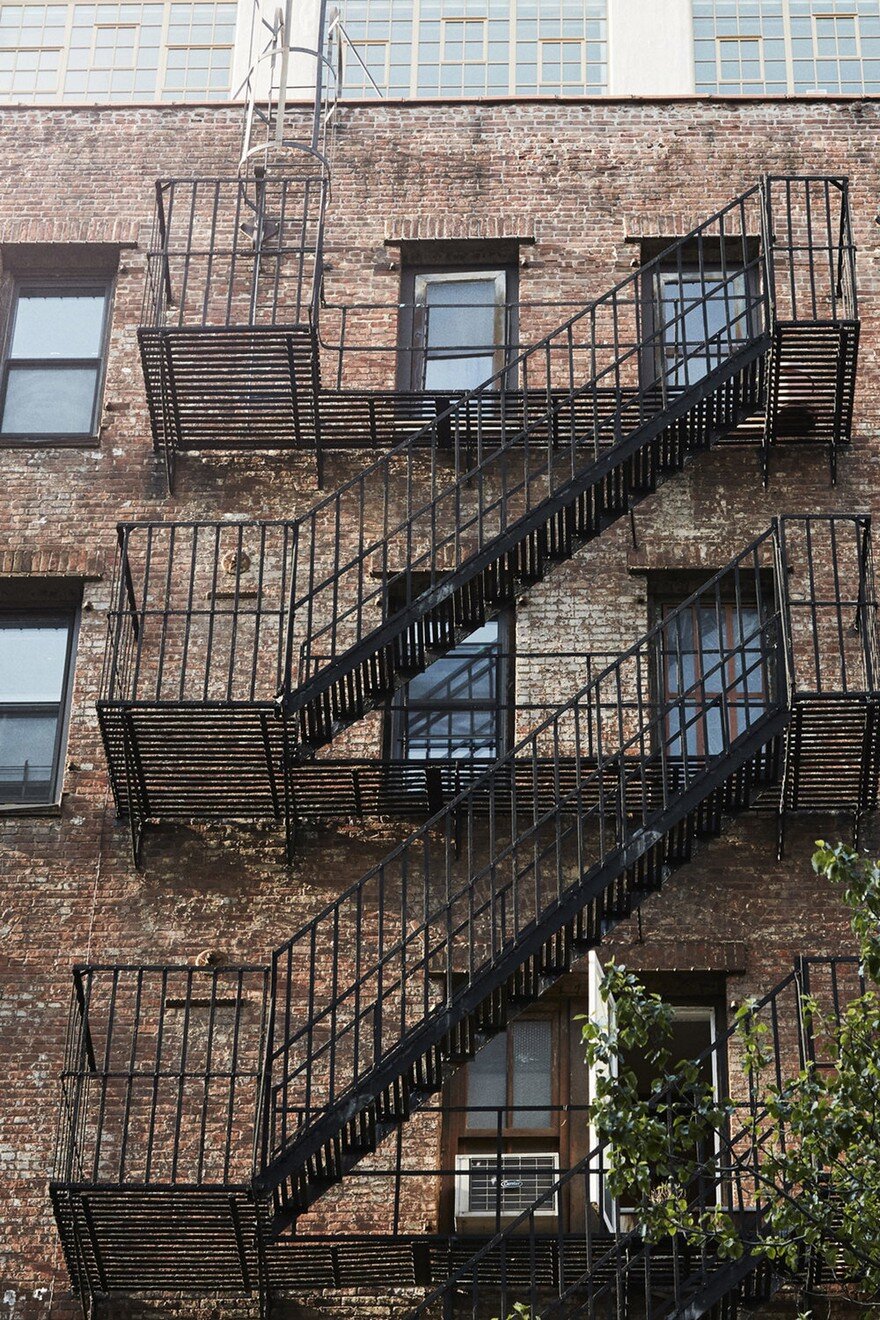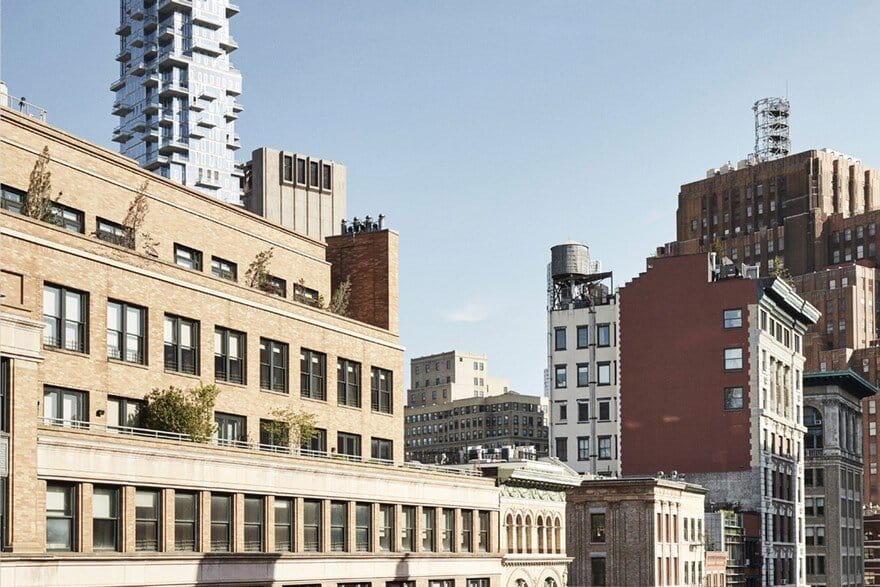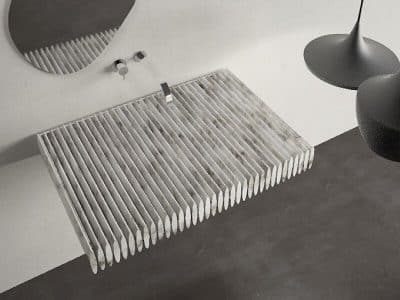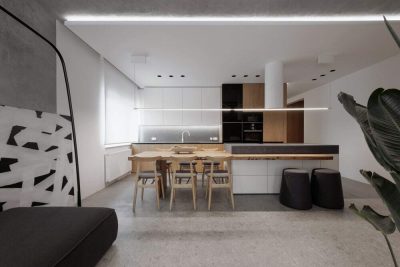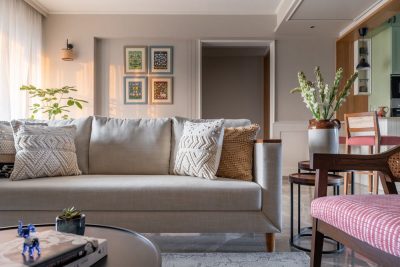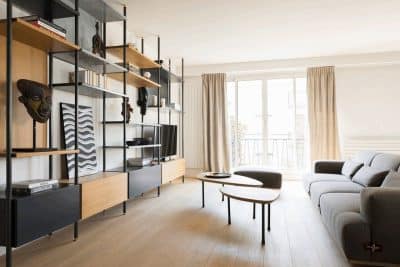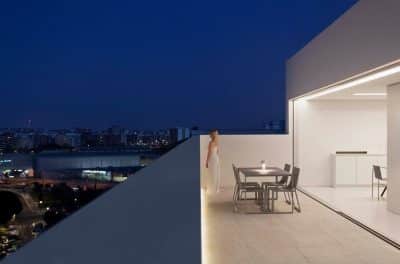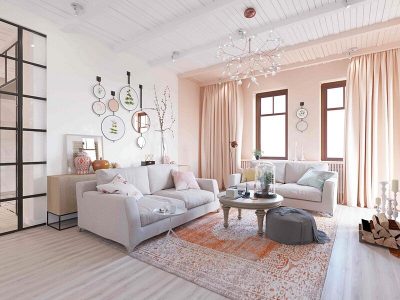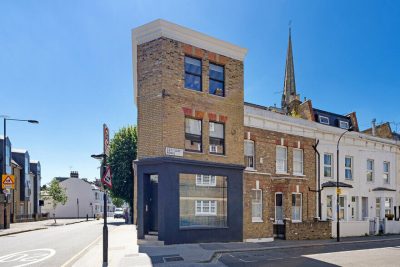Project: Hudson Street apartment
Designer: Soren Rose Studio
Location: New York, United States
Photography: Thomas Loof
The Hudson Street Apartment by Soren Rose Studio is a rare find in TriBeCa—a pre-war loft that had remained untouched for over half a century. With its 1,400-square-foot open plan and original industrial details, the apartment offered a blank canvas for a renovation that blends Scandinavian minimalism with the character of New York’s historic architecture.
A Rare Pre-War Loft
In a neighborhood where most spaces have long been reimagined, this loft from the 1800s stood out for its authenticity. Once a paper factory, the apartment still carried traces of its past, from oil stains embedded in the old oak floors to mounting screws that once secured machinery. Instead of erasing this history, the design celebrates it, weaving industrial memory into a modern living environment.
Light and Space
Most lofts in the area tend to be dark at the core, yet this apartment is unique. Windows line three sides of the home, while an enormous skylight floods the interior with daylight. Consequently, the renovation embraced this abundance of natural light, using it to highlight a Scandinavian-inspired aesthetic defined by clarity, simplicity, and calm.
Scandinavian Minimalism in New York
At the heart of the design lies a subtle but deliberate contrast. Clean lines, light finishes, and minimal details evoke the principles of Scandinavian modernism. However, the renovation never loses sight of its New York roots. The historic bones of the space—original flooring, robust proportions, and factory heritage—anchor the apartment in its urban context. The result is a home that feels both timeless and distinctly local.
A Loft Reinvented
Ultimately, the Hudson Street Apartment by Soren Rose Studio exemplifies how sensitive design can merge two worlds. Scandinavian minimalism provides lightness and restraint, while the preserved industrial character keeps the apartment grounded in its history. The project is not only a modern home but also a living narrative of TriBeCa’s architectural legacy.

